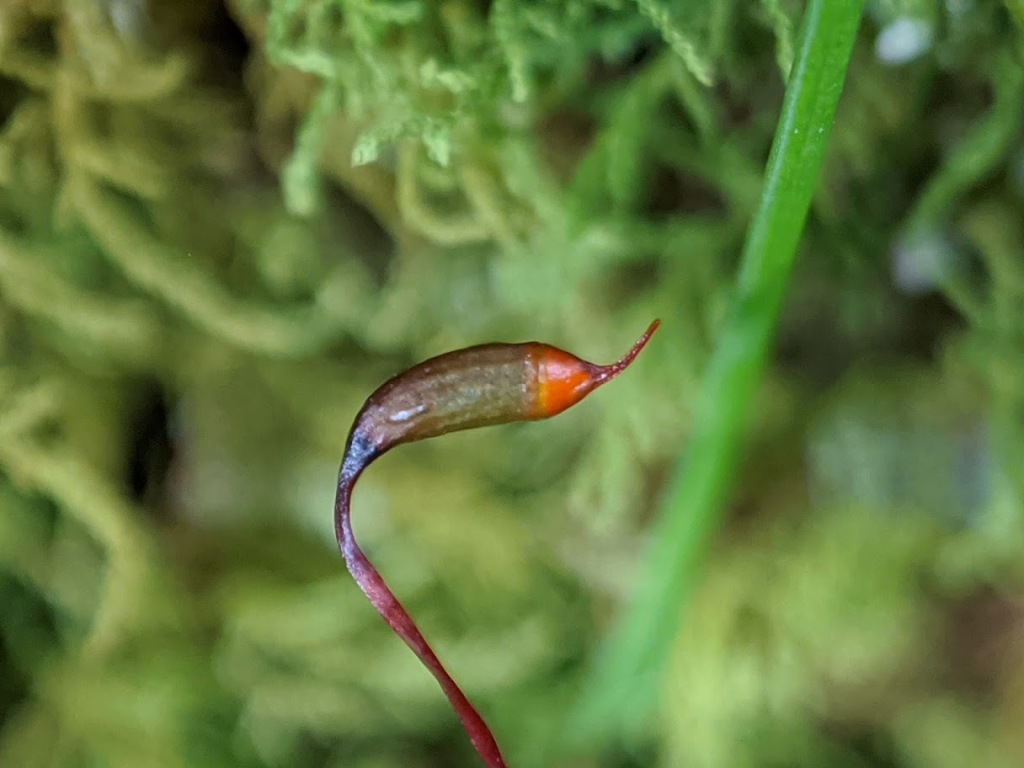Thuidiopsis
Dioicous. Asexual propagules absent. Mats or wefts on soil, rocks, logs and tree bases. Stems regularly or irregularly bipinnately branched, occasionally pinnate, with rhizoids produced ventrally where in contact with substrate, typically at the base and apex; paraphyllia on stems simple and crowded, those on branches shorter, largely restricted to base of main branches or absent; central strand present. Stem and branch leaves strongly differentiated, mostly by size and shape; costa extending to 70% of leaf length or more, but ending before apex; laminal cells quadrate to oblong, uni- or pluripapillose on both surfaces, less prominent adaxially, becoming longer and less ornamented in acumen; alar cells not differentiated. Stem leaves ovate or triangular, strongly incurved from patent base when moist or dry, cordate, plicate or not; apex acuminate or subulate, sometimes piliferous; margin coarsely crenulate or denticulate, recurved near base, without a border. Branch leaves ovate, ovate-triangular or ovate-oblong, patent with the acumen weakly incurved or erect-spreading when moist, appressed to loosely imbricate and strongly incurved from patent base when dry; apex acute, acuminate or occasionally obtuse to rounded; margin crenulate, denticulate or serrulate, plane, without a border. Capsules mostly inclined to pendent, occasionally almost erect, weakly or strongly curved, ovoid, obovoid, narrowly ellipsoid, obloid or cylindric, with an annulus. Calyptrae cucullate, smooth, with hairs at base or glabrous. Operculum obliquely rostrate. Peristome double; endostome with a high basal membrane; cilia present.
Two species occurring in Malesia, throughout Australasia and the islands of the Pacific, Central and South America, and Gough Island and Tristan da Cunha; two species in Victoria.
 Spinning
Spinning

